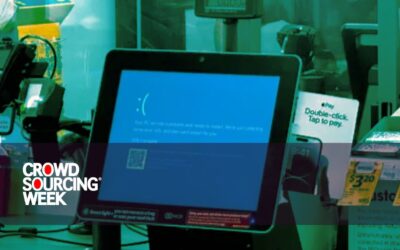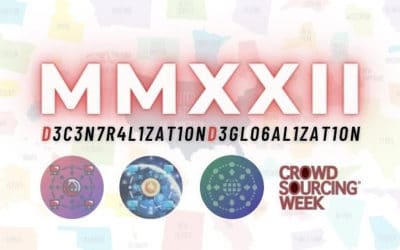Holiday season is already here and in a few more weeks, it will be 2016! And for this week, here is a curated weekly roundup of the breaking news and must-read thought leadership pieces on the crowd economy spotted by the Crowdsourcing Week team.
From Goldman Sachs to Uber: 3 bankers left Wallstreet to join tech startup
Will Silicon Valley startups and emerging tech companies provide “a greener pasture” for Wallstreet talents? Recently, three Goldman Sachs bankers have left the company to join tech startup Uber, Reuters reported. A better work-life balance and also the opportunity to work at fast-growing private companies entice them to do so.
A vice president in Wall Street investment banking can get paid $500,000, including bonus, while a mid-level corporate development employee at a technology company like Uber might earn closer to $200,000, recruiters said. The banker’s salary will often fluctuate depending on how the deals and capital raising areas are doing in a particular year. Bankers may take pay cuts to move to Silicon Valley, but there is often the appeal of a better work-life balance and the opportunity to work at fast-growing private companies that can offer shares or stock options, and therefore the possibility of big IPO paydays for senior staff. Those gains can sometimes more than make up for the reduced salaries.
Philippines to crowdsource Marcoses’ masterpieces
Imelda Marcos, the former first lady of the Philippines, is known as a lavish shoe collector, but that’s not all, the Marcoses are also fond of collecting expensive artwork, jewels, accessories and other masterpieces. The incumbent government is turning to crowdsourcing by setting up a website few weeks from now to help them find “some 200 missing paintings by likes of Picasso, Van Gogh and Rembrandt” to re-assess their value, which are believed to have increased, The Telegraph UK noted.
The Philippines government will decide whether to auction the collection of tiaras, brooches, necklaces and earrings, including a rare, barrel-shaped pink Indian diamond, after it receives the new valuation.
The jewellery, which is stored in the central bank vaults, was valued at $5 to $7 million when it was last appraised 25 years ago, but the new figure is expected to be significantly higher.
London very serious when it comes to smart cities
London recently launched Smart City Challenge competition to accelerate its influence when it comes to smart cities, Telegraph UK reported.
Backed by the London Mayor’s Office, a Smart City Challenge is being run by companies like Transport for London and IBM, who are offering a total prize of £750,000 for developers and entrepreneurs to use the Internet of Things, the cloud and other technologies to address the biggest challenges faced by Londoners.
Why Chinese millennials don’t want to own anything
With fast access to the Internet, a different mindset emerges. Here’s a thought-piece why Chinese millennials are happy to own nothing featured on Bloomberg.
Xiong’s own evolution reflects a generational shift in attitudes toward wealth, social status and well-being. During China’s go-go years, young men and women flocked to the booming coastal cities and set about acquiring the material possessions their parents never had: apartments, cars, fancy vacations. At first, Xiong was much the same. Growing up in the heartland city of Chongqing, he moved to the coastal province of Jiangsu to study food science and engineering. He became one of the few in his class to land a job at a multinational corporation.
Art and Crowdsourcing: 3D versions of world’s masterpieces for visually impaired
Here’s a good read and a project that you should check out if you’re an art fan or enthusiast. These 3D versions of the world’s famous paintings and masterpieces will be available for visually impaired via The Huffington Post.
“We are crowdsourcing 3D artists to donate time to recreate classical paintings in 3D,” Dillon explained in an interview with Dazed Digital. “The artist starts with a high-resolution scan or photograph of the painting, and then creates an interpretation of the work using 3D tools running on their computer. The artist aims to create depth in the art to make it easier for the hands to feel. Some details may be brought forward, and some may be simplified to highlight an impression of the painting.”
[Featured image credit: Unseen Art]
There are tons of fantastic stories out there. What else caught your eye this week? Did you come across some breaking news or a good thought piece?




0 Comments